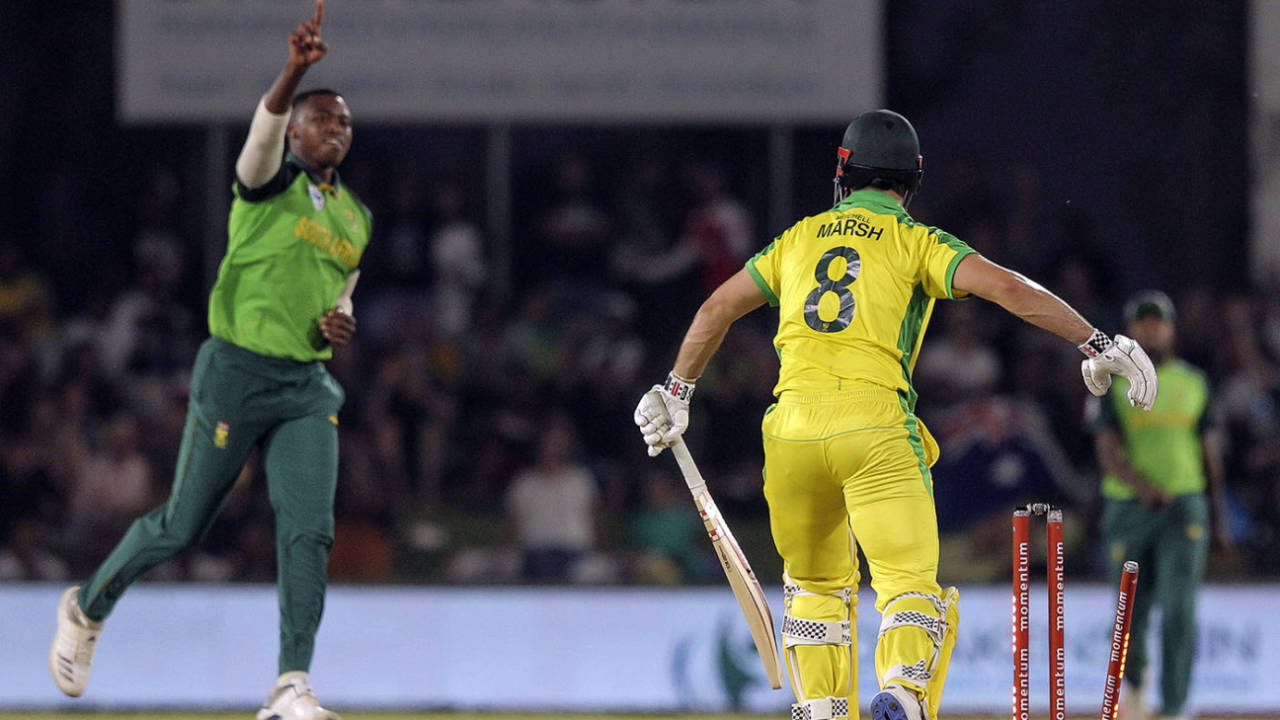Middle-order make-up among Australia's key questions
After the 3-0 defeat to South Africa, the late-season series against New Zealand will be another test for Australia's dipping ODI form
Mitchell Marsh had his off stump pegged back by Lungi Ngidi • Associated Press

Alex Malcolm is a freelance writer based in Melbourne
